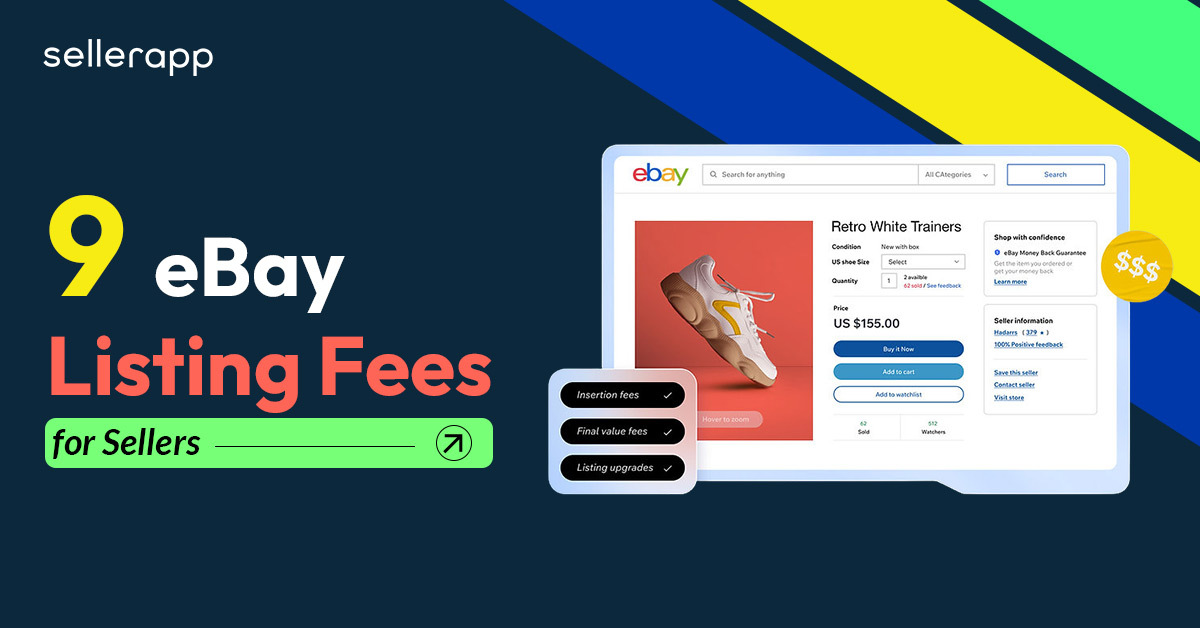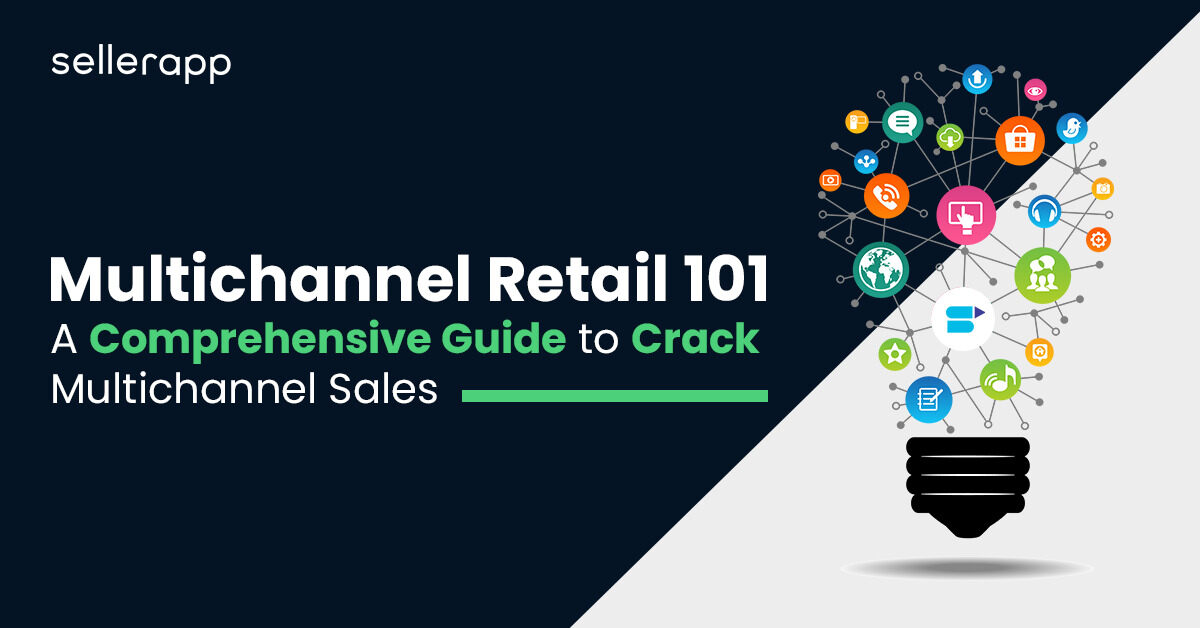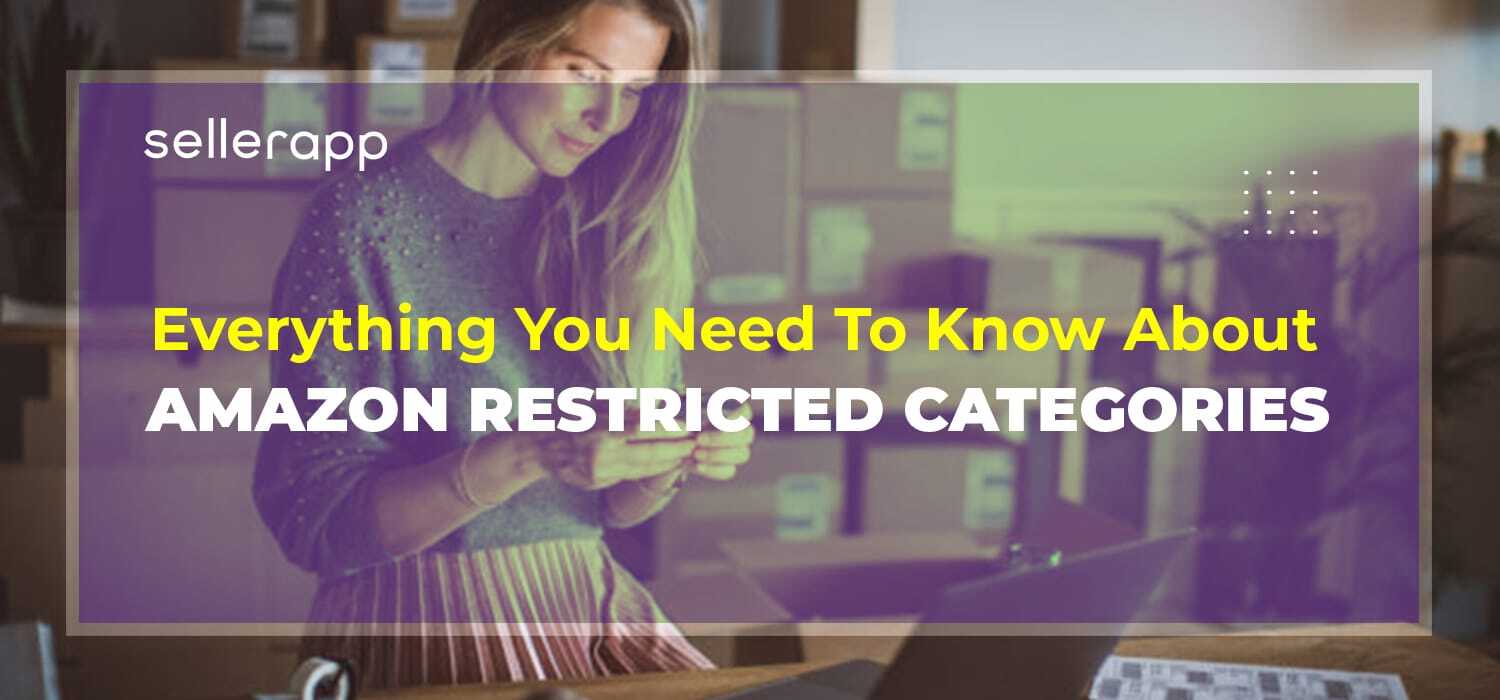eBay Listing Fees: Understanding the Ins and Outs

As one of the top online marketplaces offers a vast online marketplace with unparalleled reach, but navigating its fee structure is essential for maximizing profitability.
eBay listing fees encompass a variety of charges that sellers encounter throughout their selling journey, including insertion fees, final value fees, and optional upgrades. Understanding these fees is crucial for sellers to strategically price their products, manage expenses, and ultimately optimize their earnings.
In this guide to eBay listing fees, we’ll delve into the different types of fees sellers encounter, strategies to minimize costs, and insights on managing your eBay fee to enhance selling effectiveness.
Quick Guide
- What Are eBay Seller Fees?
- What Factors Cause eBay Listing Fees to Differ from the Standard $0.35 Fee?
- List of eBay Listing Fees for Sellers
- Insertion Fees
- eBay Final Value Fee
- eBay Percentage Fees and Listing Fees by Category
- Fees for Optional Listing Upgrades
- International Seller Fees
- eBay Store Subscription
- Classified Ad Fees
- Real Estate Fees
- Currency Conversion Fees
What Are eBay Seller Fees 2025?
eBay seller fees encompass various charges incurred by sellers when listing and selling items on the platform. These fees typically include insertion fees to subscription fees for eBay store plans offering various benefits.
Understanding these fees is essential for you to start a profitable eBay business, calculate your costs accurately, optimize your pricing strategies, and maintain profitability By managing eBay seller fees effectively, you can ensure you price competitively while maximizing your earnings in the online marketplace.
What Factors Cause eBay Listing Fees to Differ from the Standard $0.35 Fee?
Several factors influence eBay listing fees, causing them to vary from the standard $0.35 fee. The typical charge for selling used clothing and merchandise doesn’t apply universally to all items.
You incur an insertion fee for each product and category, regardless of the quantity being sold. It’s important to be aware of the elements that can lead to additional costs. These factors include:
- Subscription level
- Category of the item
- Product price
- Type of listing
- Duration of the auction
- Promotional features used
By considering these factors, sellers can better understand and manage the fees associated with their eBay listings.
List of eBay Listing Fees for Sellers
Given below is the list of eBay listing fees for business sellers and the explanations of each fee.
1. Insertion Fees
Insertion fees are among the most common listing fees on eBay, referring to the cost of uploading a listing to the platform.
eBay allows you to post up to 250 listings per month without incurring insertion fees. This means you can list up to 250 items at no charge.
Once the free listing allowance is exhausted, insertion fees of $0.35 per listing will apply. These fees are non-refundable and apply to each listing in each category. Therefore, if you list an item in four categories, you will be charged the insertion fee four times.
There are some terms and conditions you will need to understand before moving on:
- Certain categories are excluded from zero-insertion fees, such as real estate, boats, cars, trucks, motorcycles, trailers, other vehicles, water sports equipment, heavy machinery, food trucks, and commercial printers.
- If you do not have a store subscription, the zero-insertion listings apply only to the country where your account is registered. Listing items in other countries will incur insertion fees.
- Each zero-insertion listing includes up to 24 images for free; any additional images will incur fees.
How Are Insertion Fees Calculated?
So how much would it cost to list items on eBay, and can you calculate these fees in advance?
Yes indeed, you can.
Since these fees are non-refundable even if a sale isn’t completed, it’s essential to understand how eBay calculates these costs. This knowledge can help you optimize each auction and sale.
Additionally, listings with multiple quantities of the same product incur only a single insertion fee.
Here are the factors to consider when calculating these costs:
- Listing category
- Type of listing (e.g, auction or fixed price)
- Duration of the listing
- Any optional listing upgrades or promotional features used
- Subscription level (if applicable)
By considering these elements, you can better anticipate and manage your eBay listing fees.
2.eBay Final Value Fee
Rather than a commission, eBay charges a final value fee, which is calculated as a percentage of the total order value plus $0.30. The total sale value includes:
- Sale price
- Handling fees
- Shipping fees
- Sales tax
- Any additional charges (e.g., gift wrapping)
For sellers in the US, the total amount is considered the cheapest shipping option you offer to help minimize costs. For international sellers, the total value is based on the shipping service chosen by the buyer.
Sometimes, you may be eligible for fee credits if you cancel an order or issue a refund to a customer.
Additional Read: Ecommerce Demand Forecasting 101: Everything You Need to Know to Grow Your Business
3. eBay Percentage Fees and Listing Fees by Category
As mentioned earlier, eBay charges different fees depending on the category of the item being sold.
Vinyl Records, Motor Parts & Accessories, Automotive Tools, and Safety & Security Accessories: These categories incur a fee of 13.25% on the total order value up to $7,500. For orders exceeding $7,500, the fee is 2.35%.
Books, Magazines, Movies & TV, and Music: A fee of 14.95% is applied to the total order amount under $7,500. For orders over $7,500, the fee is 2.35%. This excludes all NFTs related to movies, TV, and music.
Coins and Paper Money: These items attract a fee of 13.25% for orders under $7,500 and 7% for orders over $7,500, calculated per item.
Women’s Bags and Handbags: These attract a fee of 15% on the total order value under $2,000 and 9% for each item over $2,000.
Jewelry and Watches: A fee of 15% is applied to sales under $5,000 and 9% for sales over $5,000, calculated per item. This does not include watches or watch parts and accessories.
Watches and Watch Parts or Accessories: These items incur a fee of 15% on orders under $1,000, 6.5% on orders under $7,500, and 3% on orders over $7,500.
NFTs (Non-Fungible Tokens): In the art, trading cards, music, and collectibles categories, NFTs attract a fee of 5% of the total order value.
Heavy Equipment, Printing Presses, Food Trucks, Trailers, and Carts: These categories are excluded from zero insertion fees and are charged $20 per listing. The percentage fee is 3% on the total sale value up to $15,000 per item and 0.5% for amounts over $15,000.
Musical Instruments: Items such as guitars or basses are free to list and attract a low fee of 6.5% on the total order value under $7,500 and 2.35% on amounts over $7,500.
Athletic Shoes: These shoes attract a fee of 8% on total sale amounts of $150 and above, and 13.25% for orders under $150.
4. Fees for Optional Listing Upgrades
eBay offers several listing upgrades to help your items stand out from competitors. Below is an outline of the current fees for each upgrade:
Auction Listing Upgrades
| Upgrade Type | Fee |
|---|---|
| 1 or 3-day auction | $1 |
| Add bold font | $2 |
| Additional listing images | $0.35 |
| Subtitle | Items up to $150: $1.50Items over $150: $3Real estate listings: $0.50 |
| Reserve price | $5 or 7.5% of the reserve price, whichever is higher (flat fee of $5 for high-value goods like heavy equipment) |
| International listing visibility | Starting price $0.01 to $9.99: $0.10Starting price $10 to $49.99: $0.20Starting price $50 and up: $0.40 |
Fixed Price Upgrades
| Upgrade Type | Fee |
|---|---|
| Bold font | $4 |
| Additional listing images with Gallery Plus | $1 |
| International site visibility for fixed-price listings | $0.50 |
| Scheduled Listing | Free |
| Subtitle | Items up to $150: $2 Items over $150: $6 Classified Ads and Real estate listings: $1.50 |
5.International Seller Fees
If you are a seller based in the USA and have registered your eBay account with a US address, you will only incur international fees if the delivery address is outside the USA. This fee, which is 1.65% of the total sale amount, is automatically deducted from your proceeds.
International sellers are also subject to separate fees, which vary based on their country of origin. You can find detailed information on these fees specific to your location on eBay’s website.
6.eBay Store Subscription
Many sellers on eBay find that upgrading to an eBay Store subscription boosts their business growth significantly. This subscription offers several benefits, including the ability to build a recognizable brand, send newsletters and coupons to customers, and access additional zero-insertion listings. Moreover, eBay Store subscribers can reduce their final value fees by up to 50%, helping to lower overall selling costs on the platform.
Determining the right time to transition from a free plan to a store subscription depends on various factors such as revenue milestones and the volume of additional listings being paid for. While there’s no one-size-fits-all answer, a common indicator is reaching a certain revenue threshold or needing more listings than the free allowance provides.
| Store Type | Store Subscription Fee Per Month | |
| Monthly Renewal | Yearly Renewal | |
| Starter | $7.95 | $4.95 |
| Basic | $27.95 | $21.95 |
| Premium | $74.95 | $59.95 |
| Anchor | $349.95 | $299.95 |
| Enterprise | Not currently available | $2,999.95 |
Here’s a breakdown of the eBay Store subscription options:
Starter Store: Priced at $7.95 per month, ideal for sellers with a smaller product catalog. Includes 250 free auction or fixed-price listings monthly and a reduced insertion fee of $0.30.
Basic Store: Costs $27.95 per month, suitable for expanding catalogs. Offers up to 1,000 zero-insertion fixed-price listings, 250 free auction listings, and a lower $0.25 insertion fee for additional listings.
Premium Store: Priced at $74.95 per month, designed for businesses with extensive product ranges. Provides 10,000 free fixed-price listings, 500 free auction listings, and reduced insertion fees of $0.10 and $0.15 for additional fixed-price and auction listings, respectively.
Anchor Store: Ideal for high-volume sellers at $349.95 per month. Includes 25,000 free fixed-price listings, 1,000 free auction listings, and reduced insertion fees of $0.05 and $0.10 for additional fixed-price and auction listings, respectively. Also includes dedicated customer support.
Enterprise Store: Aimed at established businesses expanding into new markets, priced at $2,999.95 per year. Offers up to 100,000 free fixed-price listings, 2,500 free auction listings, and reduced insertion fees of $0.05 and $0.10 for additional fixed-price and auction listings, respectively. Enterprise sellers benefit from lower final value fees and dedicated customer support.
These options provide eBay sellers with the flexibility to choose the subscription plan that best fits their business needs and growth trajectory.
7.Classified Ad Fees
Sellers have the option to enhance their item visibility by purchasing classified ads on eBay. These ads cost $9.95 each for a 30-day duration, and sellers are exempt from paying any final value fees associated with these ads.
8.Real Estate Fees
When selling real estate on eBay, different types of listings incur specific fees. For auctions of land and timeshares, there is a $35 insertion fee along with a $35 notice fee. Auctions set for 1 or 3 days have an additional $1 fee.
Fixed-price listings for land and timeshares carry a $50 insertion fee and a $35 notice fee.
Classified ads for land and timeshares cost $150 for a 30-day ad and $300 for a 90-day ad, with no notice fees.
Commercial and residential real estate listings on eBay do not include notice fees. For auctions, commercial and residential properties have a $100 insertion fee, with an additional $1 fee for 1 or 3-day auctions.
Fixed-price listings for these properties carry a $150 insertion fee. Classified ads for commercial and residential real estate cost $150 for a 30-day ad and $300 for a 90-day ad.
Notice fees are waived in cases where the item receives no bids, none of the bids meet the reserve price, or when using a Classified Ad format.
9.Currency Conversion Fees
When you list an item on an international eBay site, eBay may need to convert your funds into a different currency to collect their sales fees. The conversion rate used is based on the current exchange rate at the time of the transaction.
eBay applies a seller currency conversion charge, which is 3% if your registered address is in the US. For sellers in other countries, it’s recommended to check eBay’s fee page specific to their region to determine the applicable charge.
Understanding these fees gives you a comprehensive view of the potential costs associated with selling on eBay. By being aware of these details, you can effectively manage and potentially minimize the fees applicable to your transactions.
Additional Read: Top 10 Essential Ecommerce Pricing Strategies To Beat Your Competition
How to Reduce eBay Selling Fees?
Reducing eBay selling fees can significantly improve your profitability. Here are some effective strategies to help you lower these costs:
1. Choose Your Categories Wisely
When listing items on eBay, selecting the right category can significantly impact your costs. Different categories have varying fee structures, so it’s essential to research and understand these fees beforehand. Opt for categories with lower insertion fees and final value fees relative to your item’s selling price to maximize your profit margins.
This strategic approach ensures that you’re not overspending on fees, especially for items that may have a lower selling price where fees could eat into your profits more significantly.
2.Use Good ‘Til Canceled Listings
Good ‘Til Canceled (GTC) listings are a cost-effective option for sellers with items that have consistent demand. With GTC listings, you pay a single insertion fee that covers your listing for up to 30 days, automatically renewing until the item sells or you end the listing.
This eliminates the need to manually relist items, saving you time and money on renewal fees. Additionally, GTC listings maintain continuous visibility in eBay’s search results, potentially increasing the chances of your items being seen and sold.
3.Pay for an Annual Subscription
Subscribing to an eBay Store with an annual payment can provide significant cost savings for sellers. eBay Store subscriptions offer benefits such as a set number of free listings each month, discounted insertion fees beyond the free allocation, and lower final value fees. Annual subscriptions often come with promotional discounts and special offers that aren’t available with monthly subscriptions.
This approach not only reduces your upfront costs but also streamlines the selling process by providing predictable fees and additional tools to manage your listings effectively.
4.Take Advantage of Your Zero Insertion Fee Credits
eBay provides sellers with a certain number of free insertion fee credits each month, typically around 250 listings. Utilize these credits strategically by listing items in categories that qualify for zero insertion fees, ensuring you don’t incur unnecessary costs. Research the market to understand pricing trends and competitive fees, and consider bundling related items into single listings to maximize the use of your free credits.
This tactic helps you list more items without upfront costs, enhancing your profitability by reducing initial selling expenses.
5.Become a Top-Rated Seller
Achieving top-rated seller status on eBay offers multiple benefits that can lower your selling fees and increase your visibility. To qualify, maintain high standards of customer service, including fast shipping, accurate item descriptions, and responsive communication with buyers.
Top-rated sellers receive a 10% discount on final value fees, reducing the amount deducted from each sale. Moreover, eBay prioritizes top-rated sellers in search results, potentially leading to higher sales volumes and increased profitability.
By consistently meeting eBay’s seller standards, you can leverage these benefits to minimize costs and optimize your selling experience on the platform.
Additional Read: Launch a Wildly Profitable Ecommerce Business: The Complete A-Z Guide
How to Control and Manage Your eBay Fees?
Managing and controlling eBay fees is crucial to maintaining profitability and avoiding financial losses.
One effective method is diversifying your sales across multiple online platforms. This approach involves not relying solely on eBay but expanding to other marketplaces such as Facebook Marketplace or Etsy, where fees may be lower.
Selling on multiple channels diversifies your customer base, increasing the chances of reaching a broader audience beyond eBay users. This expanded reach translates into more opportunities to sell your products, reducing dependence on any single platform for sales traffic.
Additionally, cross-listing allows you to compare prices and offers across different platforms, optimizing your pricing strategy for maximum profitability.
By using competitor-based pricing insights, you can list items at competitive rates without undercutting your margins or overpricing due to platform-specific demand dynamics.
Moreover, distributing sales across various platforms helps distribute fees, balancing out the costs associated with each marketplace. This approach not only saves money but also provides flexibility in managing inventory levels effectively.
If an item doesn’t perform well on one platform, it may gain traction on another, ensuring efficient use of resources and minimizing financial risks associated with slow-moving inventory. Now, you can always track, take control, and optimize your inventory with an Inventory Management Tool.
To simplify the cross-listing process across multiple platforms without extensive manual effort, sellers can use cross-listing apps. These tools enable bulk importation of product listings, streamline editing and customization, and facilitate simultaneous uploading to various online marketplaces with minimal effort.
This efficient workflow ensures sellers can maximize their online presence while efficiently managing and controlling selling fees across different platforms. However, one of the most effective methods to optimize fees and pricing would be to take advantage of an e-commerce data API.
Conclusion
Understanding and effectively managing eBay listing fees are essential for maximizing profitability as a seller on the platform.
By carefully choosing categories, utilizing GTC listings, considering eBay Store subscriptions, leveraging zero insertion fee credits, and striving to become a top-rated seller, you can reduce costs and optimize your selling strategies.
With strategic planning and the right tools, sellers can navigate eBay’s fee ecosystem with confidence, ensuring sustainable growth and profitability in their online ventures.
Also read: Selling On Amazon FBA Vs eBay: Which Is Better For Sellers?










